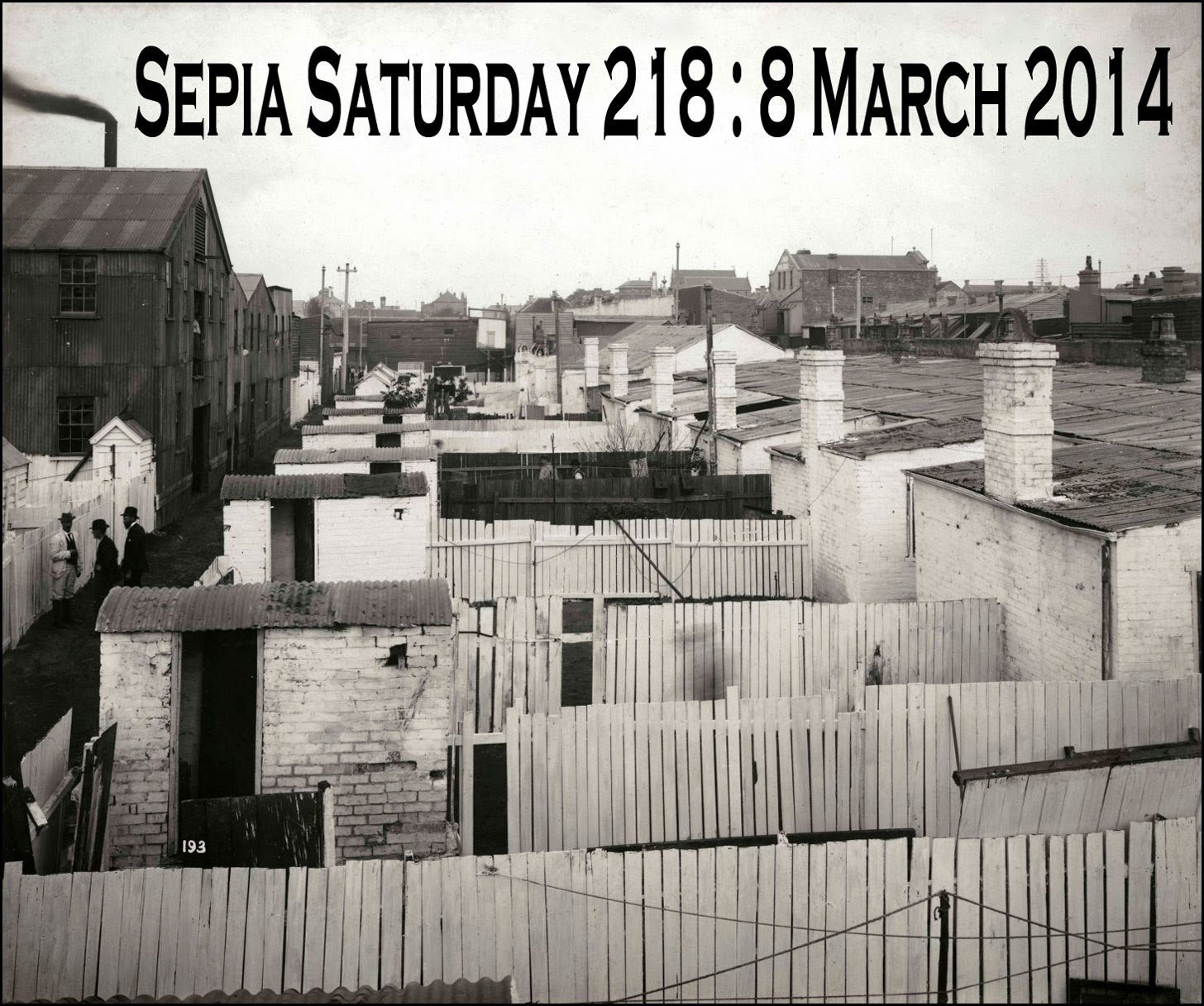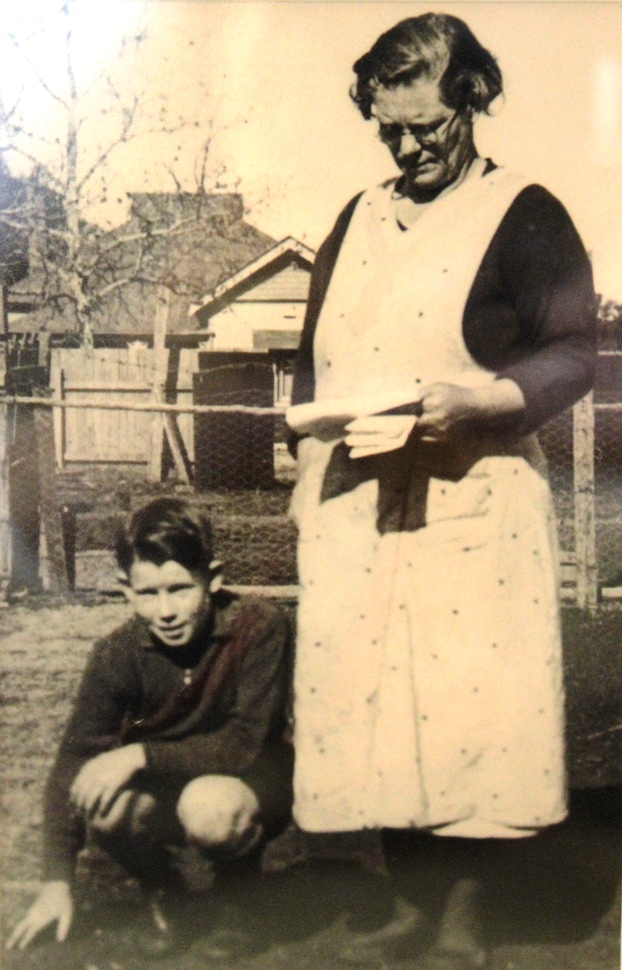This Sepia Saturday was inspired by an image of backyards in some of Sydney’s slums that were decimated by the Bubonic Plague in 1900.
My contribution will look at a backyard in another time and place, but one nonetheless touched by a plague that had tragic consequences for a family.
Below is an image of Caroline Ann Moore (nee Ritchie) and her son Jack in their backyard in Moore Street, Wangaratta in north-eastern Victoria.
Caroline and Jack Moore circa 1933
Caroline had six children: Doris (Dorrie) Gilroy (1905-1994), Albert (Bert) Edgar (1910-2000), Richard (Dick) James (1912-1976), Edna (Poppy) May (1914-2009), Alma (Bub) Caroline (born 1916) and Jack (Bluey) (1923-2012).
There are few other photos of Caroline remaining. There are no wedding photos and the only other images of Caroline are of her at church picnics and events where her face is completely obscured by her large horn rimmed glasses and the shadow created by the cloche hats she always seemed to wear. This image was taken in the early 1930s. Jack was born in June 1923 and he does not look older than ten years although he is possibly as young as eight. It isn’t clear if the mail Caroline was reading contained some news of importance, or if she was surprised by the photographer or was trying to ignore him.
This backyard image also links to the theme of plagues. In the winter and spring of 1933 north-eastern Victoria suffered from an influenza epidemic. Caroline was struck down and eventually hospitalised. She had contracted pneumonia and had a pulmonary haemorrhage. As adults, her children recalled the horror of being taken to see their mother in an oxygen tent. It must have been evident then that Caroline would not survive. Cardiac failure eventually claimed her on the 24th August 1933.
It is upon this background that this image became so precious to a young family. There is nothing special about the image but it is exactly that lack of occasion and lack of planning that makes it special. It is a snapshot in the truest sense. It captured Caroline in a way that her family fondly remembered her – always with her pinny on and always with Jack around her skirts.







Casual photographs are wonderful simply because they capture the person as they’re most often seen. Not that gussied up & planned photos aren’t good too. But the ones of someone caught in a natural every-day pose can be precious.
Beautifully written. “Lack of occasion” and those moments of “being real” do indeed make the most precious photos.
It must have been doubly a shock to the family because she seems such a robust woman. She seems absorbed, but quite relaxed, standing in the warm sun, with a hand in her pocket.
Sure was Lenore. Caroline’s mother lived to be 85 and Caroline’s husband 82. Her daughters had an average life span of almost 92! Shame penicillin was a decade away.
I totally agree. What a wonderful natural image and so typical of the Australian backyard.
Thanks for reading Sharon. Yes, typical Aussie photo I thought. Special for being so ordinary. 🙂
Even with the lack of portent and accompanying anecdote, it’s a wonderful snapshot to have. Thanks for sharing both the image and the story.
Thanks for reading gluepot!